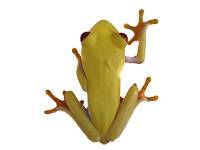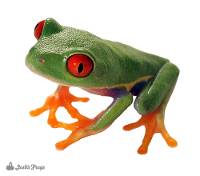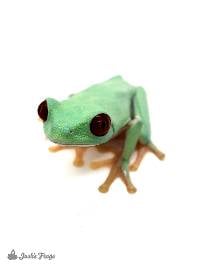Josh's Frogs
How to Care for Red Eye Tree Frogs - Agalychnis callidryas

A trio of Panamanian Red-Eyed Tree Frogs, known for their deep red eyes. RETF have many different morphs and locales.
Red-eyed tree frogs are the trademark exotic frog from the neotropics. Large, colorful, and easy to care for, Red-eyed tree frogs will forever be a popular pet frog.
What's in a Name?
The Red-Eyed Tree Frog has a very obvious common name—it is a tree frog with bright red eyes! Its scientific name is Agalychnis callidryas, which literally translates into "plenty of" (aga) "shining" (lychnos) "beautiful" (kallos) "tree nymph" (dryas). This refers to their sparkling eyes, beautiful appearance, and arboreal habits.
The Red-Eyed tree frog is also known as the red-eyed leaf frog. Historically, the Red-Eyed Tree Frog has a long taxonomic history and changed names several times.
- Hyla callidryas Cope, 1862
- Agalychnis callidryas — Cope, 1864
- Agalychnis helenae Cope, 1885
- Phyllomedusa helenae — Kellogg, 1932
- Phyllomedusa callidryas — Lutz, 1950
- Phyllomedusa helenae — Lutz, 1950
- Agalychnis callidryas callidryas — Funkhouser, 1957
- Agalychnis callidryas taylori Funkhouser, 1957
- Phyllomedusa callidryas — Savage and Heyer, 1967
- Agalychnis callidryas — Duellman, 1968
Natural History
In the wild, these frogs inhabit the canopy of tropical rainforests, and are endemic to Mexico, all the way through Central America, to the western coast of Colombia. Red eyes rely on camouflage to blend in, and do a great job due to inactivity during the day! In daylight red eyes are bright green and conceal themselves by keeping their bright red eyes closed, tucking their legs up against their bodies to hide their distinct blue sides. The compact sleeping design also helps to reduce exposed surface area, thus reducing water loss via evaporation.
Age, Size, and Growth
At the time of sale, captive-bred Red-Eyed tree frogs from Josh's Frogs will measure about 1.25 inches and be between 8 and 10 weeks old. At this age, they have been chowing down on 1/4 inch crickets for several weeks and are growing like weeds! These frogs will quickly grow to 2 inches within another 3-4 months, and be large enough to eat 1/2 inch crickets.
After about 10 months they will be nearly adult size, with males measuring about 2.5 inches and females another inch larger than the males. As adults, red eyes will easily eat 3/4 inch or adult crickets. With proper care, red-eyed tree frogs can live up to and over 5 years.
Pro Tip: Try house flies for an entertaining treat!
Housing
Red-Eyed tree frogs are easy to house. Choose a large enclosure—an 18x18x24 glass terrarium is a good size for 2-4 juveniles or adults. Opinions on substrates vary—we've had luck with finely ground coconut fiber, damp paper towel, sphagnum moss, or Josh's Frogs Tropical BioBedding. If using sphagnum moss, make sure to press down the moss so it is flat, as this will greatly reduce the risk of impaction. Paper towel will need to be changed 2-3 times a week.
Red-Eyed tree frogs need constant access to fresh, clean water, so a large water bowl is a must! Use an easy-to-clean dish, as the frog will be using the dish as a latrine and you will need to clean daily. Scrub the dish and disinfect with a 5% bleach solution or ReptiSan and allow to dry before putting it back into the tank.
Breeding
At night, red-eyed tree frogs travel down to the forest floor in search of pools of water to breed. Eggs are laid on vegetation hanging above the pools.
As the tadpoles hatch, they fall quite a distance (sometimes several meters) before splashing into the water. Tadpoles quickly grow in the pools and can leave the water in 6-8 weeks. Young red-eyed tree frogs live around the edges of the pools, before making their way back up into the canopy.






